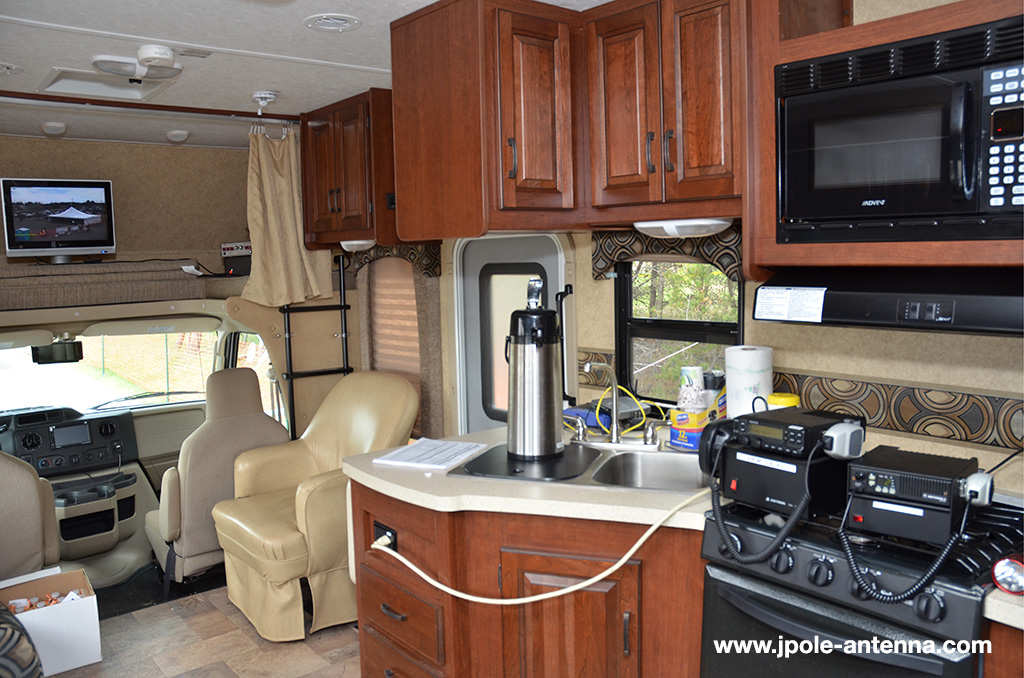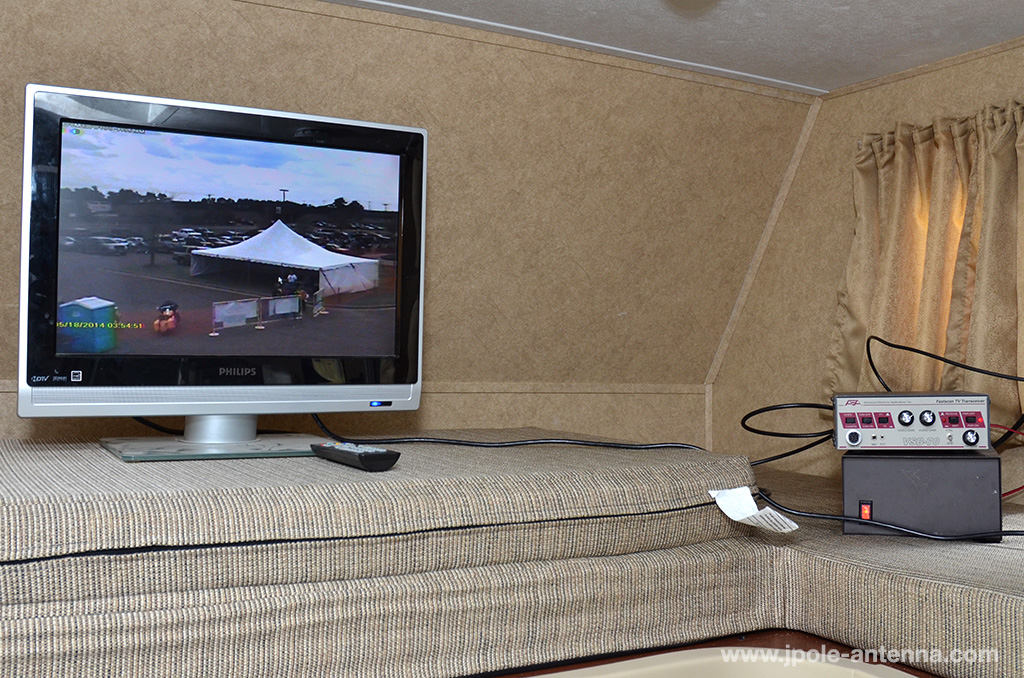Recently our ARES/RACES group provided communications for two day motorcycle rally. Titled the MDA ride, it is a fundraiser for muscular dystrophy. The communications needs for the ride may sound simple, but due to the scope of the event, it involved a comprehensive communications plan to keep the riders safe and provide situational awareness to the event organizers. As I worked with the event, I realized the strategies we used in planning and operations would be of benefit to other groups providing community event communications.
A popular activity for amateur radio clubs and ARES/RACES teams is to provide health and welfare or support communications for community events. These events can be as simple as a 5k run/walk or as an elaborate as a multi-day bicycle tour. Typically the common thread holding these events together is that the organizers have limited skills in providing communications services and will rely on cell phones or handheld FRS radios to keep in touch. Often they quickly realize that this doesn’t work and will seek out experts to provide these services for them.
[pq]Providing communications for local events is a great opportunity for a ham radio club to deliver a community service [/pq]while at the same time providing a training exercise for when emergency communications will be needed in the event of a natural disaster or other emergency.
But do all events need our communications services? As FCC licensed amateur radio operators, we are prevented from receiving individual compensation for our radio activities. Nor can we use the amateur radio bands for commercial communications. That means we can’t provide work for hire, and must work at the event on a volunteer basis; although it is permissible for the organization to provide an unsolicited honorarium or donation to the club for their participation.
More important is the commercial communications restriction. Typically you will be providing health & welfare communications for the safety of the participants. That means assisting rest stops or other check points. Other types of event communication may fall into a big gray area and we can debate their legality all day. Moving those communications off the amateur bands by using MURS, FRS, or even cell phones would be a good idea. As long as the amateur radio bands are being utilized for the safety of the participants, you should be ok.
Not all community events may even require your services. If the group is strictly a commercial enterprise, they can probably afford renting their own radios, but many community events are fund raisers run by non-profit groups. Volunteering your services for them increases your club’s visibility by keeping your activities in the community’s eye and helps keep more of the funds raised going towards the charity they are benefiting.
Needs Assessment
The first step is providing communications is the needs assessment. What is the scope of the event and how will the communications be used. Once you know the scope you can determine how many radio operators will be needed. Do you have enough man-power to service the event or will you need to recruit more operators. Maybe partnering with another amateur radio club will be necessary for a large scale event.
The second part of needs assessment is what you can provide to the event. A 5K run may only require handheld radios and a few operators, but a multi-day event could require shifts of operators. Are you going to work only on simplex or will have access to a repeater. Will handhelds be sufficient or will the operators need high power mobile radios. Some events in mountainous or remote areas may even use HF communications to keep in touch with all the check-points. knowing the scope of the event will determine what you may need to provide.
Event communications can be more than just voice communications. Can you provide alternate modes that will benefit the event, like APRS for tracking support vehicles or the head and tail of a parade? Maybe amateur television (ATV) can be pressed into service to provide an extra level of situational awareness to the organizers or a mesh network for high speed data communications. Even just bringing a weather station can be a great asset to an event. Discuss your capabilities with the organizers to determine what they could use and what you are capable of providing.
Pre-Planning
The communications planning for the event may be the most overlooked aspect by ham radio operators. Many approach an event by recruiting fellow club members and telling them “bring what you have, we’ll figure things out when we get there.” While this may work with small events, you will soon be overwhelmed once the scale of the event increases. Crucial to our event planning is the use of the Incident Command System.
The Incident Command System or ICS is a framework or set of structures commonly used by public safety agencies to provide command and control of an incident. ICS is designed to be flexible so it works from the smallest house fire to largest multi-agency response to a wildland fire. But ICS is not just for fires and accidents, it can be used for any type of event that requires command and control, so it’s a perfect structure to use for a community event. In the Incident Command System you will designate an Incident Leader, define the mission, and provide the documentation necessary to carry out the mission.
ICS can be big and unwieldy for the novice; it contains a lot of forms to document the process. Not all of these forms will be necessary for your event. I recommend that you concentrate just on using the bare minimum and utilizing more as the scope of the event increases.
The minimum ICS forms you should use for your event are:
ICS-201 – Incident Briefing (PDF)
ICS-202 – Incident Objectives (PDF)
ICS-205 – Incident Communications Plan (PDF)
ICS-211 – Check in sheet- Amateur Radio Version (PDF)
ICS-309 – Communication Log Sheet (PDF)
Having these forms prepared and distributed to your team at the start (or even beforehand) will brief them on the scope of their activity at the event, and most importantly have them all on the same radio channel.
Where should your net control station be? In your pre-planning identify an ideal location for net control. It should be in a quiet spot with easy access to your event organizers. The station could operate out of the same location as the organizer, or be located away from the noise but have easy access to key event leaders. Noise and traffic can be a big problem when you’re trying to communicate, so take in account the noise level in the location of your operations.
Event Operations

Net control operations in the event command vehicle. Away from the noise of the event, key personnel can use the space to receive information and make decisions.
At your event you should have a team leader. This is the person that will report to the appropriate event organizer. The team leader can shadow the organizer, or be a net control with ready access to the organizer. It all depends on the scale of the event. Typically an individual should only have one assignment, but small events with limited help may have you doing double duty.
Start each event with a command briefing. This will entail going over the ICS-202 with your team, doing a radio check, and handing out assignments. If the event requires shift changes or new operators come on scene, they should also receive the same briefing with any additional updates. The team leader should keep an event log that can be passed along to their replacement. This makes the change-over briefing quicker and more accurate as you won’t miss any important details.

In a large event, like the MDA ride, we use a variety of amateur and non-amateur radio frequencies for communications. In the background is the amateur television display.

Requesting support from neighboring amateur radio groups can help fill the man-power needs for larger events. Note the remote control camera that we used for our ATV feed
General event operations don’t always mesh well with health and welfare traffic, so our group has a cache of MURS band programmed radios that we can distribute to event organizers. The MURS band is license free and can be used for commercial and personal communications, so it’s a perfect compliment to the amateur radio band as it keeps any commercial communications off the amateur radio bands. Sometimes the event will already have their own business band radios. Make sure they issue one of those radios to your team leader or control op to keep in touch with the event staff.
After-Action Report
You’re still not done after the event is finished and the equipment is packed away. The cap of any event is the debrief or after-action report. This can be a simple polling among your team of what went well and what could be improved, or a more entailed discussion on how to make the event better. Share your impressions with the event organizers and get their feedback. Be professional and constructive. Your services are being utilized as communications experts, so structure your comments in a way that will make the event better. Just about all organizers will appreciate those types of comments.
Conclusion
There is more that goes into successful communications for a community event than what meets the eye. Just circulating a sign up sheet and hoping enough operators show up is often not enough. But with planning, use of the Incident Command System, and constructive debriefing, your group will be seen as communications experts. Plus the training these events provide will prepare your team in the event that your services will be needed for something more significant. Do you have any tips for community event communications? Please share them in the comments below.




Recent Comments